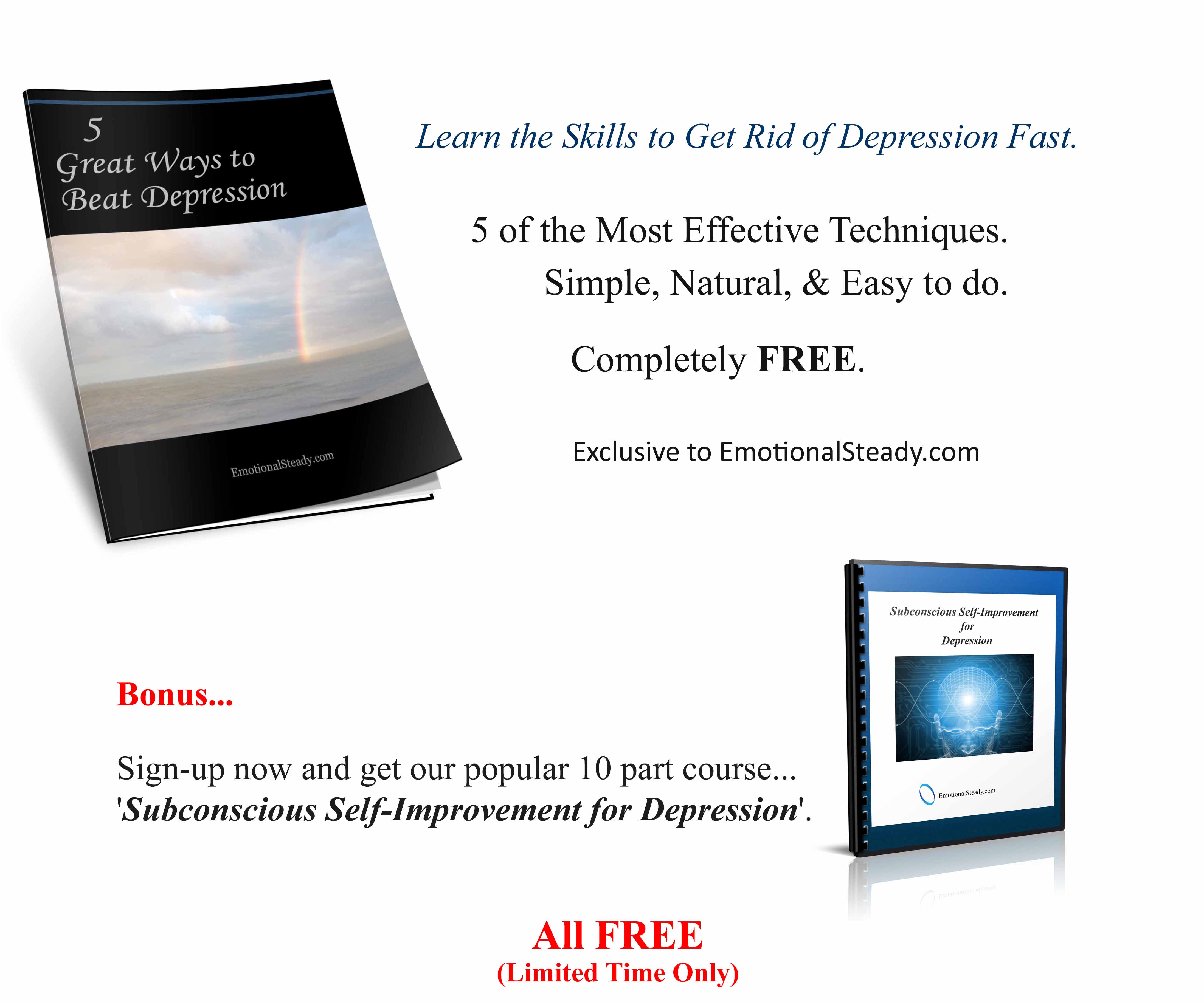 |
Types of Depression
The ‘Depression’ that most people identify with, is more commonly known as ‘Clinical depression’ or sometimes ‘Major depression’, ‘Unipolar depression’, or ‘Unipolar disorder’, which you can read more about here. There are however, several other kinds of depressive illness, and while the majority of their symptoms are the same as with clinical depression, the manner by which they manifest can differ, as described below.
Dysthymia Characterized by a similarity to ‘Clinical depression’, although regarded as less severe. It is a condition that is likely to last for long time, but because of the lower level of severity it is possible that anyone suffering from dysthymia will be able to lead a normal life most of the time. It is also quite likely that the sufferer will go through bouts of far more serious depressive episodes which may be more or less frequent depending upon the individual concerned.
Bipolar Disorder Formerly known as ‘Manic depression’, it is a condition where the sufferer endures periods of abnormally elevated moods (which are clinically described as being mania) that alternate with periods of serious depression. Sometimes these things occur immediately one after the other, but more commonly they are separated by periods of 'normal' behavior. Far less common than other forms of depression, these mood swings go far beyond the highest and lowest that non-bipolar disorder sufferers will ever experience. It is a condition that causes severe psychological problems that are likely to hamper the ability of a sufferer to enjoy a normal existence.
Cyclothymia Characterized as a mild form of bipolar disorder whereby an individual suffering from this mental illness may occasionally suffer from severe changes in their mood. A person with Cyclothymia will have a history of mood swings that range from mild depression to emotional highs. Most people's symptoms are mild enough that they do not seek mental health treatment, so it often goes undiagnosed and untreated. The mood swings can disrupt personal and work relationships, so it is paramount that a mental health professional is consulted for a diagnosis so treatment can begin as soon as possible. Cyclothymia can progress into bipolar disorder, and it is often not until this late stage that people seek treatment.
Postpartum depression Defined as a depressive episode that occurs within one year of childbirth. The condition, sometimes also known as ‘Postnatal depression’, tends to affect women (although it is not unknown for men to suffer as well). It is thought that the physical stress during child birth and the uncertain sense of responsibility towards the new born baby can be just some of the possible factors as to why some new mothers go through this.
Seasonal Affective Disorder As the name might suggest, Seasonal Affective Disorder (SAD) is a depressive condition that is triggered by the changing of the seasons, with the most common form of SAD being winter-onset depression. While a sufferer may not feel that they are depressed, they will tend to sleep a lot more, have less energy, and crave sweet and starchy foods. Though symptoms can be severe, they usually pass, presumably once the seasons start to change again. It is however, a serious condition with many of the symptoms mimicking those of clinical depression or dysthymia.
Depression: About Symptoms Causes FAQ
|
© EmotionalSteady.com - All Rights Reserved
